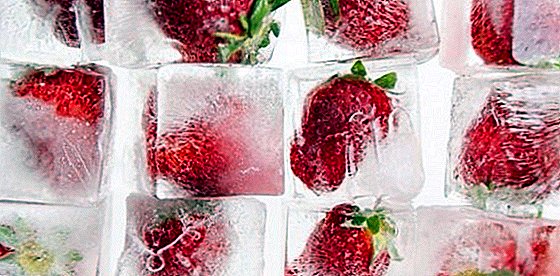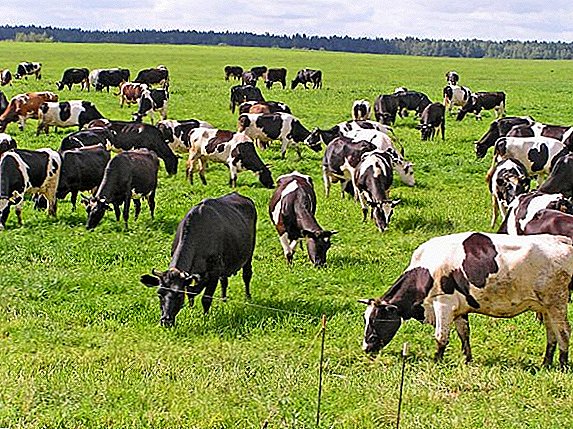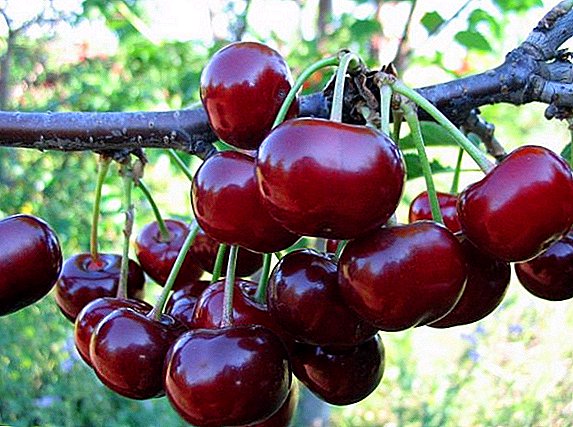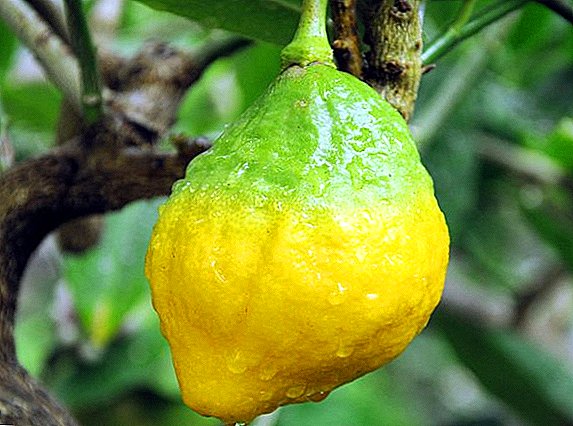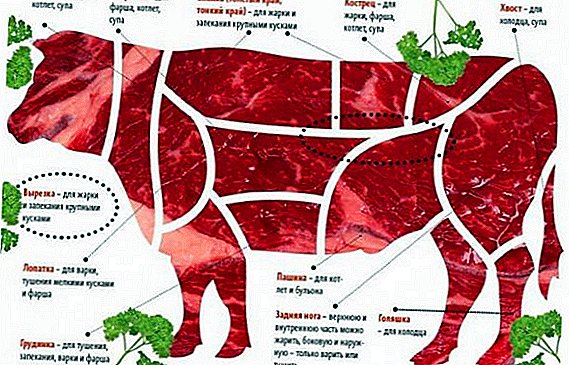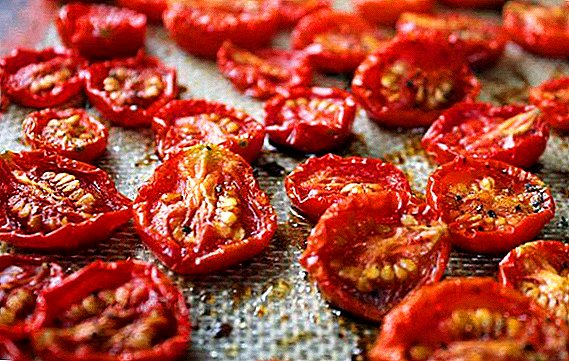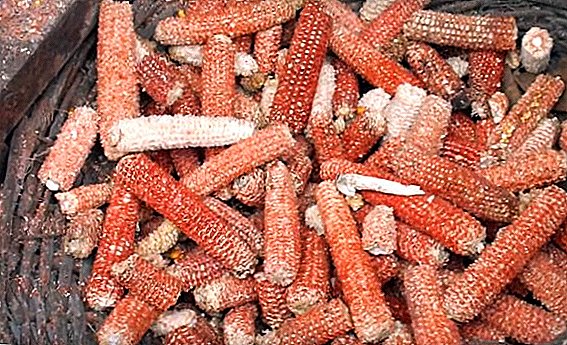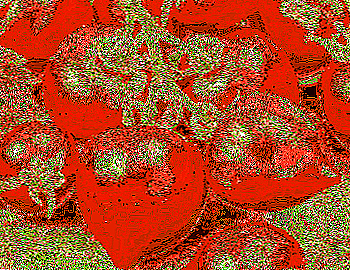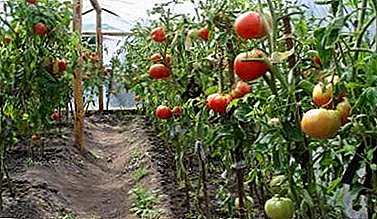
The ultimate goal of any gardener is a rich harvest in his home plot. But what to do, if the area of the land itself is quite small, and you can’t expect a big harvest?
Output - compacted planting method: 2 tomatoes in 1 well. In our article we will tell you about the pros and cons of this technology, how to properly prepare the ground before planting seedlings, and also how to properly care for tomatoes in the process of growth.
Can I plant tomatoes for a few pieces?
Recently, among gardeners, the method of planting 2 pieces in 1 well has become increasingly popular. At the same time, this method is a subject of dispute: is it worth or not worth planting tomatoes like that and what does this method give? Nevertheless, the technology gives good results, so it is worth considering it in more detail.
Description of the technology, its pros and cons
Planting method is quite simple: planting holes are pulled out, in each of which 2 tomatoes are planted. This technology has several advantages:
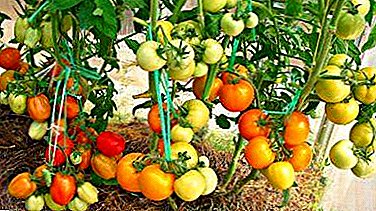 higher yield per unit area;
higher yield per unit area;- larger fruits;
- tomatoes ripen faster;
- saving space; garters;
- This method is good for southern latitudes (thickened landing covers the roots).
There are certain disadvantages:
- more planting material is required;
- compacted planting requires constant attention from the gardener;
- excessively dense planting can lead to real “thickets”, which will complicate the process of care and pasynkovaniya.
What tomatoes can be planted on several roots?
Two plants per well can be planted as determinant varieties of tomatoes, and indeterminate. But novice gardeners or those who are not systematically involved in the garden (for example, coming to the cottage on weekends), it is better to plant only determinant varieties in this compacted way, since they do not grow too quickly and do not need to be staved.
Another condition - in one seat should be planted tomatoes of one variety! Each type of tomato has its own requirements for watering, feeding, care, so even minor discrepancies can lead to the death of the crop.
Indeterminate tomatoes have unlimited growth of the main stem, require the formation of a bush.
Preparatory stage
The soil
- For planting tomatoes sunny place is selected, without drafts.
- The place should not be damp with close standing of groundwater.
- The site for planting tomatoes is chosen taking into account the proper crop rotation: it is impossible to plant tomatoes in the same place twice in a row, it is better if the onions, garlic, carrots, cucumbers, cabbage, zucchini, beets, and pumpkin are predecessors of tomatoes.
- We can not allow the seedlings to land in the place of other nightshade, since all diseases will be inherited.
- In autumn and spring, the soil must be thoroughly dug up in order to saturate it with oxygen and remove the roots of weeds.
- Before digging, it is possible to scatter fertilizer on the soil to enrich it with nutrients (50 g of superphosphate per 1 square meter or 5 kg of manure per 1 square meter).
- For 5 - 6 days before planting, the area should be shed with a solution of blue vitriol (1 tbsp per 10 liters of water): per 1 sq. M 1 - 1.5 liters of liquid.
Plants
 Recommended before planting seedlings treated with a weak and warm solution of potassium permanganate for the prevention of fungal diseases, which are still very fragile young plants. Since 2 tomatoes will be planted in one well, it is necessary to prepare a sufficient amount of planting material in advance.
Recommended before planting seedlings treated with a weak and warm solution of potassium permanganate for the prevention of fungal diseases, which are still very fragile young plants. Since 2 tomatoes will be planted in one well, it is necessary to prepare a sufficient amount of planting material in advance.
How to determine whether the seedlings are ready for planting in open ground? In this matter, indicators such as plant height, stem thickness and number of leaves will help:
- For early varieties of tomatoes:
- optimum height of seedlings should be 20-25 cm;
- stem thickness - 5–7 mm;
- leaves on the plant should be 7 - 9.
- For late varieties:
- height - 20 - 25 cm;
- stem thickness - 5-6 mm;
- the number of leaves is 6-8.
Instruction
The wells are dug 20-20 cm deep, the distance between them is 40–50 cm, the distance between the rows is 50–60 cm.
- Prepare the wells for landing.
- The wells should be well spilled with water and wait until it is absorbed into the ground (the hole is completely filled with water).
- In the landing hole is made grooves in which the tomatoes will be placed.
- A pair of tomatoes buried in the ground at an angle of 45 degrees.
- From above, the roots of plants are covered with earth (dry), which is pressed lightly at the base of the stems for better fixation.
- Each well must be poured another 1 liter of water.
Cultivation and care
Watering
For 7 - 8 days, until the seedlings take root, you should not water. Young plants will be enough of the amount of moisture they receive when planting.
The best time for watering is in the afternoon, towards evening. It is desirable that the tomatoes no longer fall into direct sunlight. Tomatoes do not like when moisture gets on their leaves - from this they can start to suffer from fungal diseases.
Watering is made only at the root, it is better if it is drip. From the moment the seedlings are planted until the first ovary, the soil is only moistened, preventing it from drying out. When tomatoes begin to bear fruit, they should be watered systematically and abundantly, since the root system needs to feed the plant vigorously, especially if there are two plants in the hole.
Top dressing
Two tomatoes in one hole need "enhanced nutrition." Of the preferred fertilizers:
- superphosphate;
- humus;
- ash.
You can use chicken dung (1:15, 1 bucket for 10 - 15 bushes).
Loosening and hilling
Every time after watering the soil should be loosened, and 15 to 18 days after planting, many vegetable growers recommend hilling young plants to a height of 12 cm.
Mulching
 In order for the soil to keep moisture and roots longer, many gardeners mulch the beds, fill the soil surface:
In order for the soil to keep moisture and roots longer, many gardeners mulch the beds, fill the soil surface:
- mowed grass;
- straw;
- peat;
- sawdust;
- husk sunflower seeds and others.
In addition, mulching will prevent the growth of various weeds.
Forming a bush
In order to increase yields, improve the quality of fruits, and speed up their ripening process, tomato bushes are shaped in a special way. Experienced vegetable growers form each of the twin tomatoes in 2 stalks. Thus, a bush of 4 stems is formed in one hole, but 2 roots feed them, which, undoubtedly, only positively affects the yield.
Reference! To form a bush in 2 stems, all shoots are removed from the main stem, except those growing under the first flower brush. On the main shoot, leave 4 flower brushes and pinch the top, and on the side - leave 3 fruit brushes and also pinch.
Leaf pruning
Be sure to get rid of the lower leaves for better ventilation of the plant.
Common mistakes and their prevention
- An overly thick mass of tomatoes. The main reason - missed the moment of timely pasynkovaniya. This is especially true for indeterminate varieties. The consequence is a lack of harvest. For plants should be monitored constantly, in time to make the formation of the bush, pasynkovanie (breaking off side shoots of a length of 3 - 4 cm).
- Saplings "interfere" with each other. The reason - too small distance between plants. The distance between shoots of determinant varieties should be 15-20 cm, between indeterminant varieties - up to 30 cm.
- Planted tomatoes do not grow, stand in one place. One of the main causes of this phenomenon is the lack of nutrition for plants. When planting in the hole, you can make a variety of organic fertilizers (manure, humus, onion peels, eggshells, banana peel, etc.), minerals (superphosphate, ammonium nitrate), also complex fertilizers will also do.
Each gardener is free to decide for himself how to grow plants. But you can always experiment, otherwise you will never be able to choose the optimal way of growing tomatoes, suitable directly for this area, given weather conditions.


 higher yield per unit area;
higher yield per unit area;